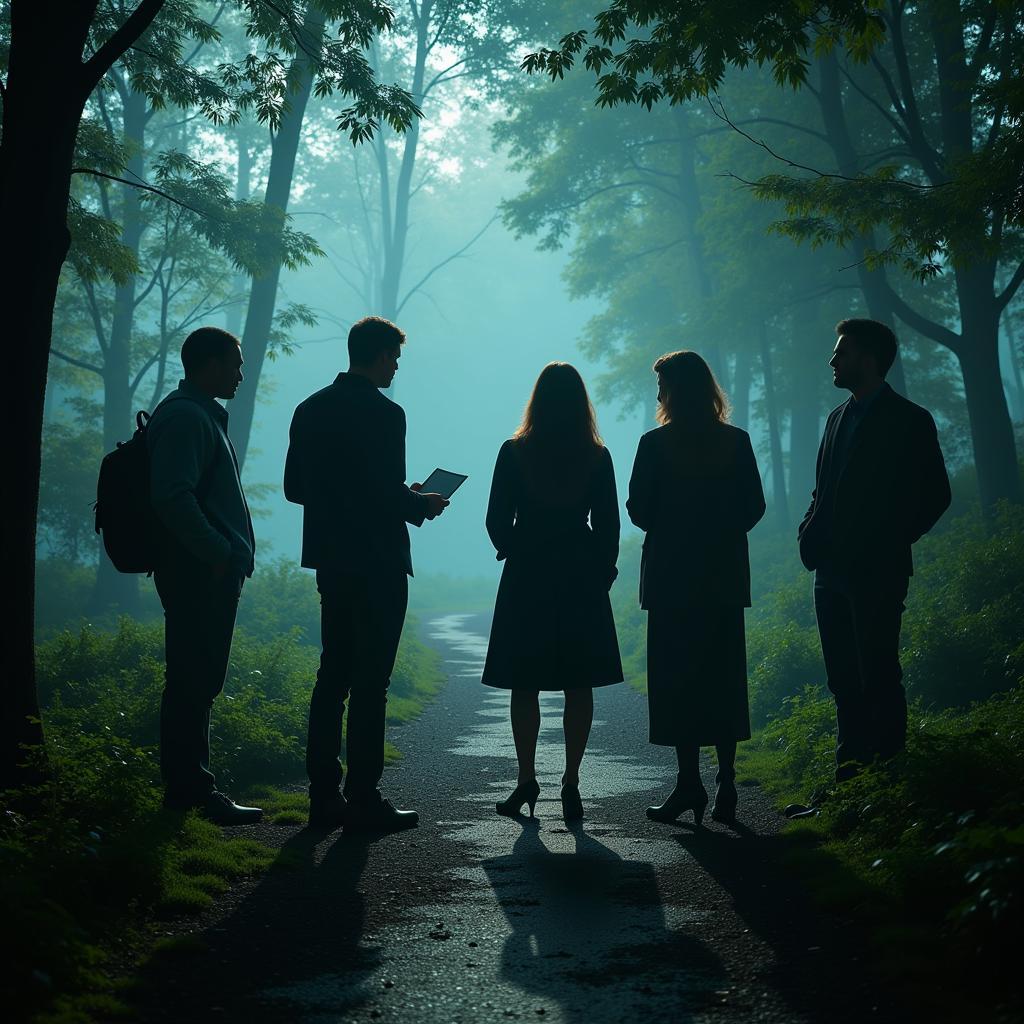Objectivity Of Research is paramount, especially when delving into the enigmatic realm of the paranormal. While the desire to prove the existence of ghosts, spirits, and other unexplained phenomena is strong, a rigorous and unbiased approach is essential for credible results. Maintaining objectivity helps us separate genuine anomalies from misinterpretations, environmental factors, or even deliberate hoaxes. This article explores the crucial role of objectivity in paranormal research and how it can be achieved.
Maintaining objectivity in paranormal research presents unique challenges. The field often deals with subjective experiences and eyewitness accounts, making it susceptible to bias. One of the advantages of quantitative research is that it can offer measurable data. However, even with quantitative methods, researchers must be vigilant against confirmation bias, where they may unconsciously interpret data to fit pre-existing beliefs. For instance, a slight temperature drop in a supposedly haunted location might be attributed to paranormal activity, while other potential explanations, like a draft, are overlooked. It’s crucial to approach each investigation with a healthy dose of skepticism, questioning every piece of evidence and considering all possible explanations.
The Importance of Objectivity in Paranormal Research
Objectivity, in essence, means eliminating personal biases and preconceived notions. It demands a commitment to following the evidence wherever it leads, even if it contradicts our initial hypotheses. Why is this so crucial in paranormal research? Because the field is inherently prone to subjective interpretations. Experiences often rely on personal testimony, which can be influenced by a variety of factors, from fear and excitement to cultural beliefs and the power of suggestion. Without a framework of objectivity, these subjective experiences can be easily misconstrued as paranormal events.
Practical Steps to Ensure Objectivity
So, how can we strive for objectivity in a field as elusive as paranormal research? Here are some key steps:
- Establish Clear Research Protocols: Having a predefined methodology ensures consistency and reduces the risk of bias creeping in during data collection and analysis.
- Employ Multiple Investigative Methods: Using a variety of tools and techniques, from EMF meters and thermal cameras to audio recorders and even controlled experiments, can provide a more comprehensive picture.
- Document Everything Meticulously: Detailed records of every observation, measurement, and environmental condition are vital for later review and analysis. This includes time-stamping all data and ensuring chain of custody for any physical evidence.
- Seek Independent Verification: Whenever possible, have findings reviewed by other researchers, ideally those with different perspectives or expertise, to minimize confirmation bias.
Challenges to Objectivity in Paranormal Investigations
While striving for objectivity is essential, several challenges can hinder its attainment in paranormal research. One significant hurdle is the very nature of the subject matter. Paranormal phenomena, by definition, defy conventional scientific understanding, making it difficult to apply traditional research methods. Also, the emotional investment of both researchers and witnesses can cloud judgment and lead to biased interpretations. Fear, excitement, or the desire to validate pre-existing beliefs can skew perceptions of events.
Overcoming Bias in Paranormal Research
Despite the inherent challenges, researchers can implement strategies to mitigate bias and enhance objectivity. Blind testing, where researchers are unaware of the specific conditions of an experiment, can help minimize confirmation bias. Similarly, adopting a multidisciplinary approach, incorporating insights from fields like psychology, sociology, and environmental science, can offer alternative explanations for seemingly paranormal occurrences. Policy research associates inc can offer valuable expertise for such research, providing a critical perspective.
 Overcoming Biases in Paranormal Research
Overcoming Biases in Paranormal Research
Applying Research Sampling Frame in Paranormal Studies
A crucial aspect of maintaining objectivity is employing a rigorous research sampling frame. This involves carefully defining the population being studied and selecting a representative sample. In paranormal research, this might involve choosing specific locations or individuals with reported experiences. A well-defined research sampling frame helps ensure that the data collected is relevant and generalizable. Analytical method research emphasizes the importance of using appropriate analytical tools to interpret the collected data.
 Paranormal Research: Sampling Frame and Location Selection
Paranormal Research: Sampling Frame and Location Selection
Equal research day highlights the continuous pursuit of objective knowledge in all fields, including Paranormal Research. Maintaining objectivity is not just about eliminating personal bias; it’s about actively seeking alternative explanations, challenging assumptions, and embracing the possibility that we might be wrong. It’s about adhering to rigorous methodology and pursuing evidence-based conclusions, even if they lead us down unexpected paths.
Conclusion
Objectivity of research is the cornerstone of credible paranormal investigations. By adhering to strict protocols, embracing a skeptical mindset, and continuously seeking alternative explanations, we can move closer to understanding the mysteries of the unexplained. While the search for answers in the paranormal world is undoubtedly challenging, a commitment to objectivity will ensure that our pursuit remains grounded in reason and evidence.
Need help with a paranormal investigation or want to learn more about objective research methods? Contact us at Phone Number: 0904826292, Email: research@gmail.com or visit us at No. 31, Alley 142/7, P. Phú Viên, Bồ Đề, Long Biên, Hà Nội, Việt Nam. We have a 24/7 customer service team.